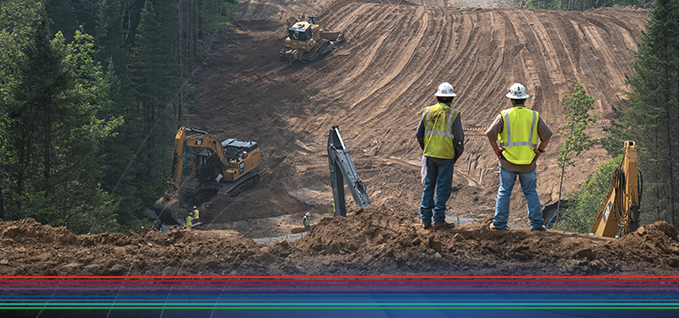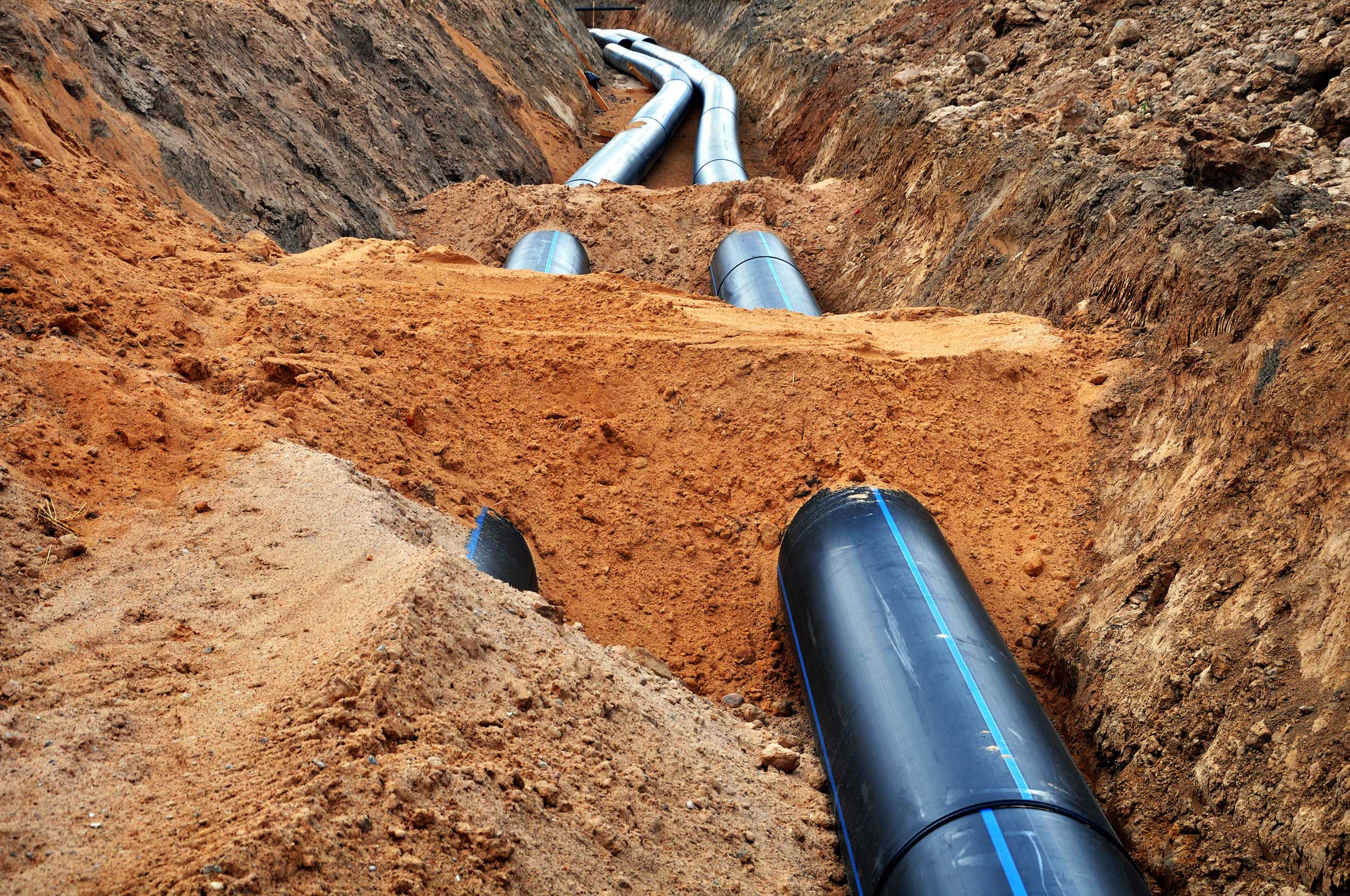Midland oilfield pipeline services: Practical approach for emergency response planning
Wiki Article
Recognizing the Key Functions of Pipeline Services and Their Effect On Efficiency
Pipeline services play a necessary role in various sectors, influencing functional efficiency significantly. Trick attributes, such as advanced tracking innovations and upkeep methods, are crucial for minimizing downtime. Additionally, regulative conformity warranties security and environmental management. Nevertheless, the interaction in between design, infrastructure, and economic aspects can complicate these procedures. Comprehending how these aspects impact overall effectiveness increases vital concerns about finest techniques and future developments in the field.The Role of Technology in Pipeline Surveillance
As innovations in technology continue to advance, the significance of reliable pipe monitoring has actually come to be increasingly noticeable. Modern pipeline systems rely upon innovative monitoring tools that boost functional effectiveness and security. Technologies such as real-time information analytics, sensors, and drones offer operators with immediate understandings into pipe conditions, enabling them to find leaks, deterioration, and various other prospective problems before they intensify into substantial troubles.Additionally, the integration of Web of Points (IoT) tools has actually changed typical surveillance methods, enabling for continual monitoring and automated coverage. This aggressive technique not just minimizes risks however also optimizes maintenance routines and resource appropriation. Additionally, advanced software systems promote data visualization and interpretation, empowering decision-makers to react quickly to anomalies. Collectively, these technological technologies not just improve pipe honesty yet likewise foster ecological stewardship by alleviating the prospective effect of leaks and spills.
Maintenance Techniques for Enhanced Effectiveness
Effective maintenance approaches are vital for optimizing pipe performance. Implementing anticipating upkeep methods, adhering to routine assessment protocols, and creating robust emergency reaction plans can significantly enhance functional dependability. These techniques not just decrease downtime yet likewise add to the overall safety and security and honesty of pipeline systems.Anticipating Maintenance Methods
Predictive maintenance techniques are progressively acknowledged for their capacity to boost operational effectiveness in pipe solutions. By leveraging data analytics and keeping track of technologies, these techniques enable operators to prepare for equipment failings before they happen. This positive strategy reduces unplanned downtime, reduces upkeep prices, and expands the life expectancy of vital possessions. Sensors and IoT devices play a pivotal role in accumulating real-time data, permitting the evaluation of tools health and performance trends. Artificial intelligence formulas evaluate this data to recognize patterns and forecast possible problems. As a result, pipe operators can arrange upkeep activities during non-peak times, maximizing resource allotment and guaranteeing continuous procedure. Eventually, the adoption of predictive maintenance fosters an extra reputable and effective pipeline framework.
Routine Inspection Protocols
Regular assessment procedures work as a cornerstone of maintenance methods aimed at improving effectiveness in pipe operations - Pipeline services Midland Texas. These protocols include organized evaluations of pipe integrity, concentrating on discovering prospective concerns prior to they escalate. Normal examinations usually include visual analyses, leakage discovery modern technologies, and pressure monitoring to ensure peak efficiency. By sticking to established timetables, drivers can determine deterioration, material wear, or obstruction, thereby decreasing downtime and repair service prices. Additionally, information gathered throughout examinations can educate anticipating maintenance efforts, enabling an aggressive strategy to pipe monitoring. Ultimately, regular examinations not just extend the life expectancy of pipeline facilities but additionally add to much safer and more reputable transport of sources, strengthening overall functional effectivenessEmergency Situation Action Preparation
Emergency situation response planning is important for keeping efficiency in pipeline procedures, making sure that operators are prepared to address unanticipated events swiftly and effectively. A well-structured emergency response strategy consists of clear methods, assigned functions, and communication techniques to mitigate threats connected with pipe failings. Routine drills and training boost group readiness and acquaint employees with emergency situation procedures. In addition, having readily available resources, such as spill containment equipment and emergency situation contact listings, can greatly minimize response times. By integrating real-time tracking modern technologies, operators can quickly determine and react to concerns, decreasing environmental effect and operational downtime. Ultimately, a thorough emergency feedback strategy not just safeguards possessions and employees however additionally enhances the total efficiency of pipe services.Regulatory Compliance and Safety Specifications
Governing compliance and safety criteria play an essential duty in the pipeline solutions sector. Midland pipeline construction company. Following market regulations assures that firms execute efficient security methods and take the chance of monitoring approaches. This commitment not just shields personnel and the setting yet additionally improves overall functional effectivenessConformity With Industry Laws
Conformity with market guidelines is essential for making certain the safety and effectiveness of pipe procedures. Regulative frameworks, such as those developed by the Epa (EPA) and the Pipeline and Hazardous Materials Security Management (PHMSA), established stringent standards that operators have to stick to. These regulations cover different elements, consisting of pipe style, construction, maintenance, and tracking, guaranteeing that systems operate securely and successfully. Non-compliance can cause severe penalties, operational delays, and environmental risks. By sticking to these regulations, pipeline companies not just shield public safety and security and the setting yet likewise improve their operational effectiveness. Eventually, regulatory compliance Midland pipeline construction company cultivates trust amongst stakeholders, making certain that pipeline solutions can run effortlessly in a competitive landscape while meeting legal responsibilities.
Safety Protocol Execution
Efficient safety and security protocol execution is an essential element of pipe procedures, carefully connected to regulatory conformity and safety criteria. Following these methods not only ensures the security of workers but likewise safeguards the environment and infrastructure. A robust safety structure includes regular training, extensive assessments, and using proper safety equipment. Organizations needs to continue to be alert in updating their methods to mirror changes in regulations and technological innovations. Compliance with established safety and security criteria reduces the risk of crashes and improves functional effectiveness. In addition, a society of security cultivates staff member interaction and accountability, adding to general business success. Eventually, efficient safety and security procedure application is vital in preserving the honesty of pipe solutions and achieving long-term sustainability in procedures.Risk Monitoring Strategies
Implementing robust danger management strategies is essential for ensuring that pipeline procedures stick to governing demands and safety and security standards. Organizations has to recognize potential risks and analyze risks linked with pipeline activities. This includes conducting thorough evaluations, making use of innovative surveillance technologies, and keeping conformity with industry laws. Normal training for employees on security protocols improves situational awareness and prepares teams to respond successfully to emergencies. In addition, creating backup plans and carrying out drills can considerably reduce dangers. Collaborating with regulative bodies makes certain positioning with progressing safety and security standards. By focusing on threat management, pipe solutions can boost operational effectiveness while safeguarding both the environment and public security. Ultimately, an aggressive approach to risk monitoring cultivates a society of safety and security within the industry.Pipeline Design and Facilities Considerations
How can the layout and infrastructure of pipelines affect total operational performance? The setup of pipes plays an essential function in identifying their efficiency. Efficient design minimizes rubbing losses, hence minimizing energy usage during liquid transport. Factors such as size, product choice, and format directly effect circulation rates and upkeep demands.In addition, calculated placement of shutoffs and monitoring systems enhances operational control and safety and security. Pipeline services Midland Texas. Infrastructure factors to consider, including accessibility for repair and maintenance, considerably impact downtime and general efficiency
Additionally, incorporating advanced technology for real-time monitoring helps with punctual discovery of leakages or inefficiencies, guaranteeing swift responses to problems. The overall structural honesty, affected by product longevity and ecological aspects, also shapes long-term functional success. Subsequently, thoughtful layout and durable infrastructure are necessary for making the most of pipeline effectiveness, inevitably contributing to the dependability and profitability of pipeline solutions.
Environmental Influence and Sustainability Practices
While the demand for pipe solutions continues to expand, understanding the environmental effect and embracing sustainability methods has become progressively important. The construction and operation of pipelines can significantly affect ecological communities, wildlife habitats, and water sources. To alleviate these effects, business are implementing innovative innovations and methods focused on minimizing emissions, protecting against spills, and reducing land disruption.
Sustainability efforts commonly include using eco-friendly materials, improving power performance, and utilizing renewable resource sources to power procedures. In addition, firms are progressively conducting detailed environmental assessments before job initiation, guaranteeing compliance with laws and stakeholder interaction.

Cost Administration and Economic Consider Pipeline Providers
As the pipeline industry expands, efficient price management and comprehending economic variables come to be necessary for maintaining competition. Firms face numerous economic pressures, consisting of varying product prices, labor expenditures, and regulatory compliance fees. To navigate these obstacles, pipe solution companies have to adopt strategic financial planning and budgeting methods.Purchasing technology can improve functional effectiveness, inevitably lowering expenses over time. Additionally, efficient job monitoring warranties that sources are designated effectively, lessening delays and unanticipated expenditures.

Market problems, such as demand for energy and geopolitical factors, likewise affect financial feasibility. Business have to remain nimble, changing their strategies in feedback to these outside factors.
Regularly Asked Questions
What Are the Different Sorts Of Pipeline Services Available?
Numerous sorts of pipe solutions consist of transportation, storage space, upkeep, inspection, and fixing. Each solution plays an important role in ensuring the seamless motion of materials, enhancing security, and decreasing functional disturbances throughout various fields.Exactly How Typically Should Pipeline Inspections Be Conducted?
Pipeline evaluations ought to be carried out frequently, generally each to three years, relying on the kind and condition of the pipe. More constant inspections may be necessary for older or risky pipes to assure safety and security and integrity.
What Are the Key Causes of Pipeline Failures?
The primary reasons for pipeline failures include deterioration, faulty building, material defects, external damage, leakages, and functional errors. Each factor contributes significantly to prospective dangers, highlighting the value of normal maintenance and surveillance for security.Just How Can Business Enhance Pipeline Solution Integrity?
Business can boost pipe service integrity by implementing normal maintenance timetables, making use of advanced monitoring modern technologies, carrying out complete examinations, investing in staff member training, and adopting positive danger administration techniques to anticipate and alleviate possible failings.What Role Do Operators Play in Pipeline Solutions?
Operators play a crucial duty in pipeline solutions by guaranteeing secure transport, preserving tools, checking system honesty, coordinating maintenance, and replying to emergency situations. Their experience straight influences functional efficiency and lessens disturbances in service delivery.Report this wiki page